5 Obtrusive Orchid Pests
5 Obtrusive Orchid Pests
Yesterday, April 16, was National Orchid Day! These beautiful flowers are bright and fragrant, and prefer sunlight that is not directly on them at all times. Orchids are typically easy to grow, but can be a little tricky to keep healthy. While orchids do well in greenhouses and conservatories, a prolonged pest invasion can reduce the plant’s vigor and eventually lead to its end. Most garden pests can be removed with a spray of cold water, but the damage may already be done at that point. Let’s look into five common orchid pests and what type of harm they can bring to these unique flowers.
Aphids
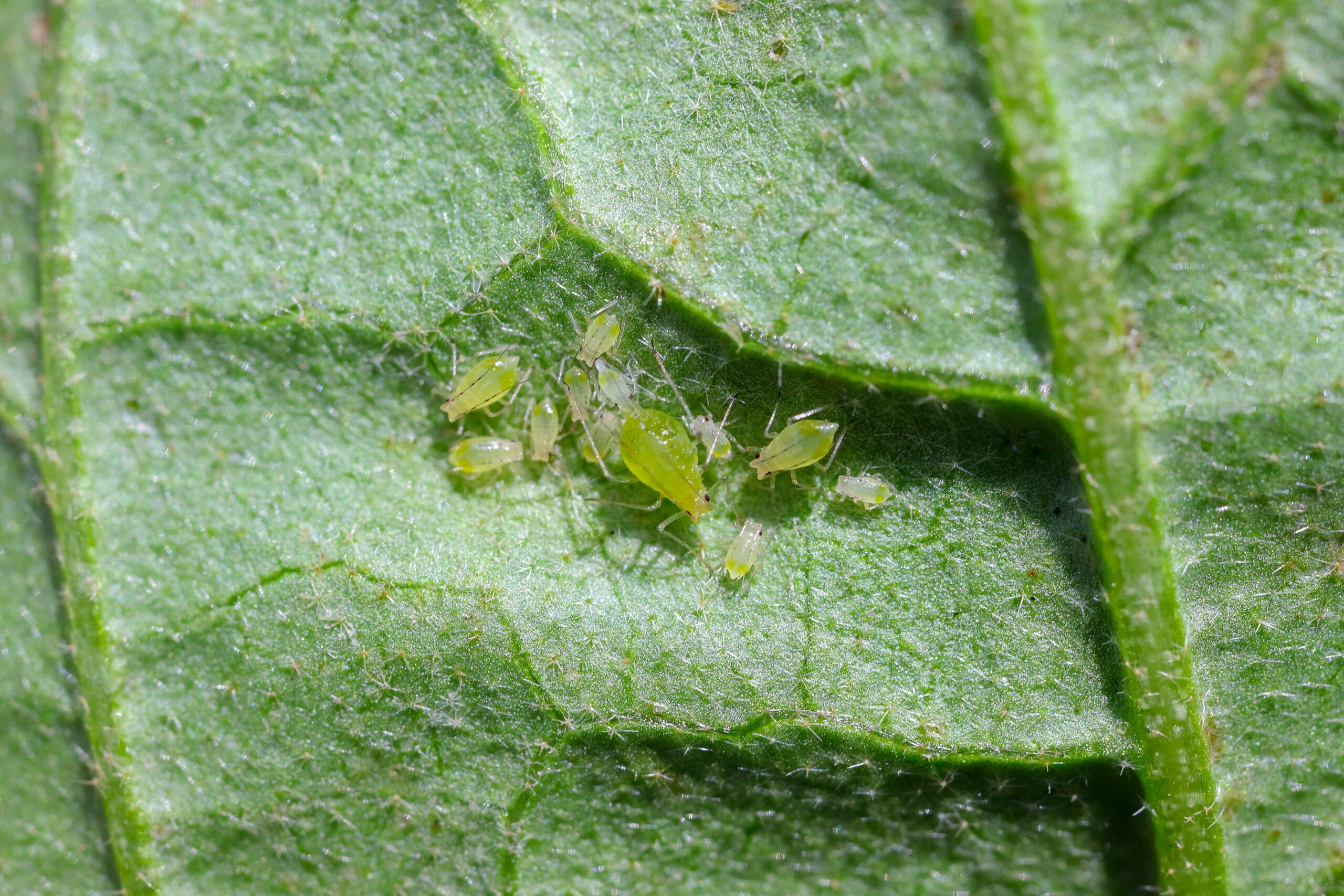
Aphids may as well be an automatic addition to any list of troublesome garden pests. They are some of the quickest reproducers and destroyers of foliage. These soft-bodied insects are only 1 to 2 millimeters, and primarily live on the underside of leaves. Almost all aphids are females that reproduce on their own, and some are already born pregnant in their family of 100 young aphids. Because of this, an aphid invasion can kill a plant in no time flat. They have piercing mouthparts that they stick into the plant and use to drink the sap within. They will eat just about any plant, but aphids prefer young flowers and buds. While feeding in clusters, aphids will produce waste that looks like white spots, which are called honeydew. Ants will even “farm” aphids in order to get more honeydew, as these larger pests enjoy the sweetness. The ants will move aphids to different plants, which gives the aphids more of a variety in their diet and provides the ants with honeydew in different locations. When it comes to orchids, aphids can be detrimental to the flower’s health. Their excessive feedings can prevent the orchid from budding and cause the leaves to get sticky, resulting in a weakened plant.
Mites
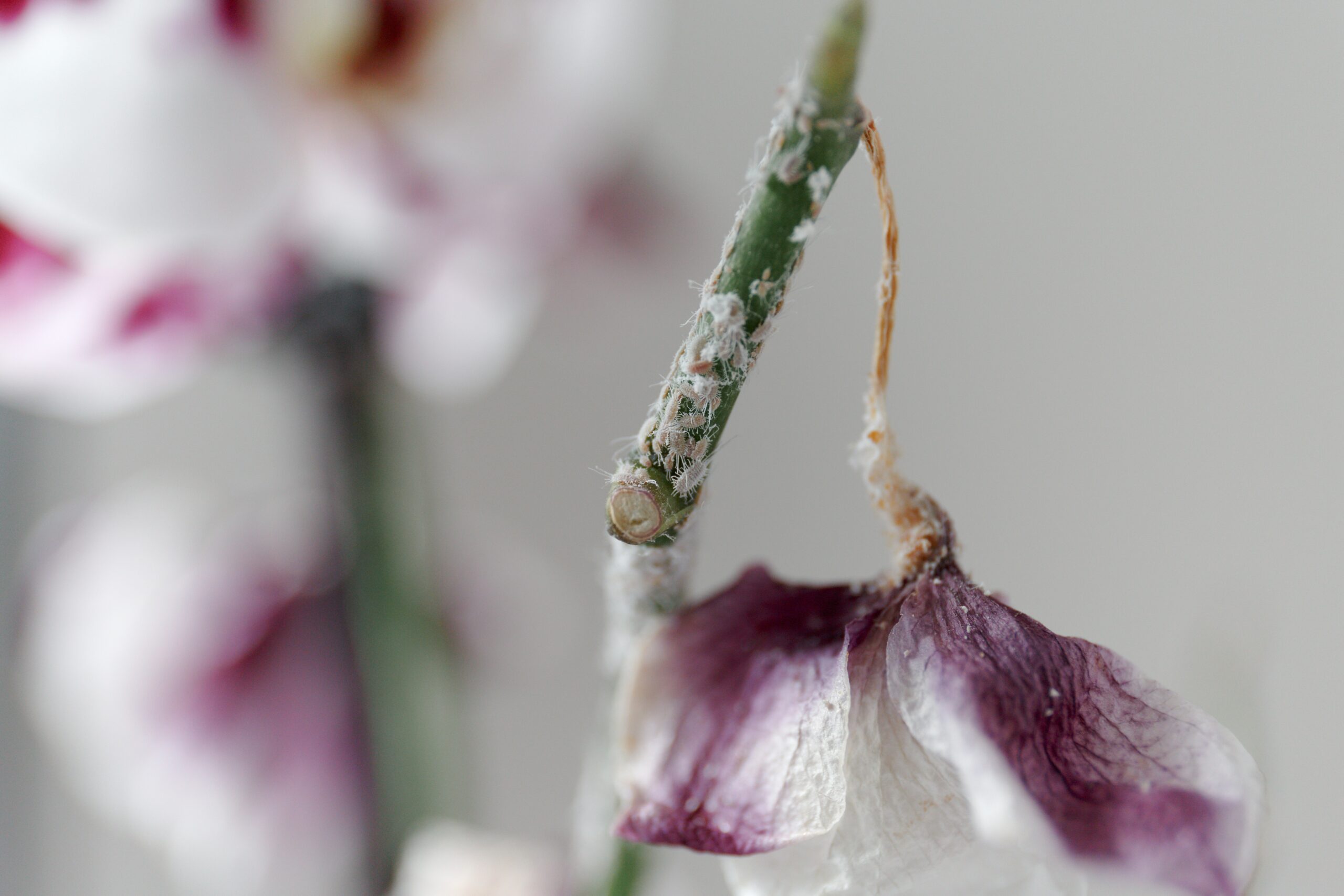
Although mites are technically arachnids, they do not have the same beneficial qualities as spiders. Spider mites are actually the most common garden mites, and they also like to live underneath the leaves of a plant. These mites will leave both droppings and webbing behind, with the webbing both anchoring the mites to the plant and catching any smaller pests lurking around. Since spider mites love hot and dry conditions, they will go to the greenery that is in the sunniest parts of the yard. The mites will ruin any plant they live on by stripping them of chlorophyll, and orchids are no exception. When the leaves do not have their normal amount of chlorophyll, their green coloring will become stippled. Spider mites will feed on the plant’s sap to the point of leaving a silver sheen on the bottom of the leaves. Mites of all kinds are almost invisible due to their tiny size, but there is one telltale sign that spider mites are involved: their webs. Whereas normal spider webs are intricate and stringy, spider mite webs are more cotton-like and anchor to the soil and underside of the leaves.
Scale Insects
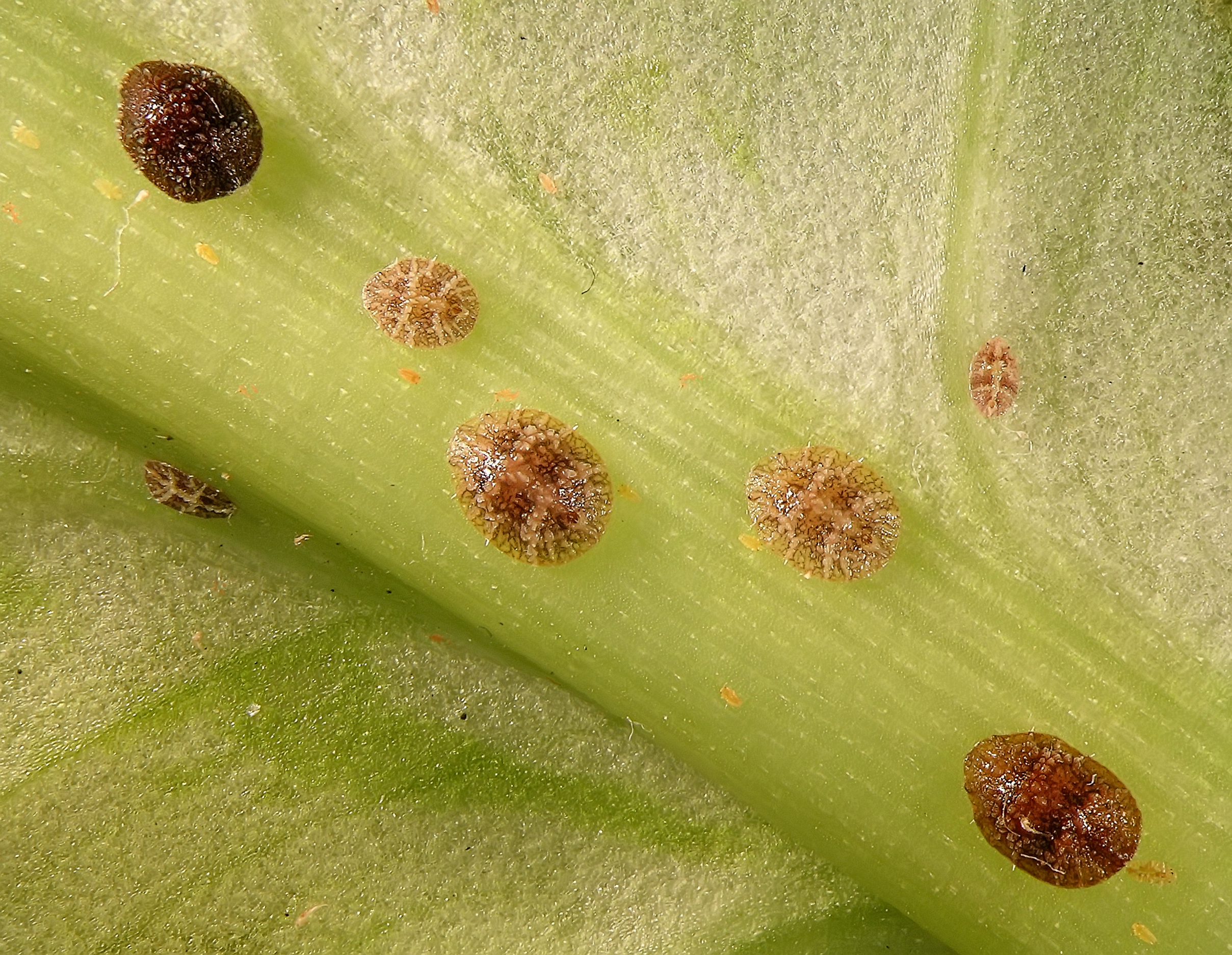
Upon first glance, scale insects just look like some blemishes or fungus on the plant. But these pests are quite destructive for their size, and the difficulty of removing them makes it easier for them to efficiently ruin a plant. When the adult scale insects are ready to lay eggs, they make a protective shell to cover them all. This shell is what we see when inspecting plants, and it doesn’t seem like a bunch of tiny insects could be under there. But when the scale insects are disturbed and on the move, they can crawl much faster than you might think! Scale insects hide underneath leaves so they can feed and lay eggs in peace. When a family of these pests stay on an orchid for a while, the leaves will visibly suffer. Their excessive feedings will create yellow patches in the leaves, which will eventually drop from the plant. The shells of scale insects are very tough, so they need to be dislodged in order for the pests to be completely treated and eliminated.
Thrips
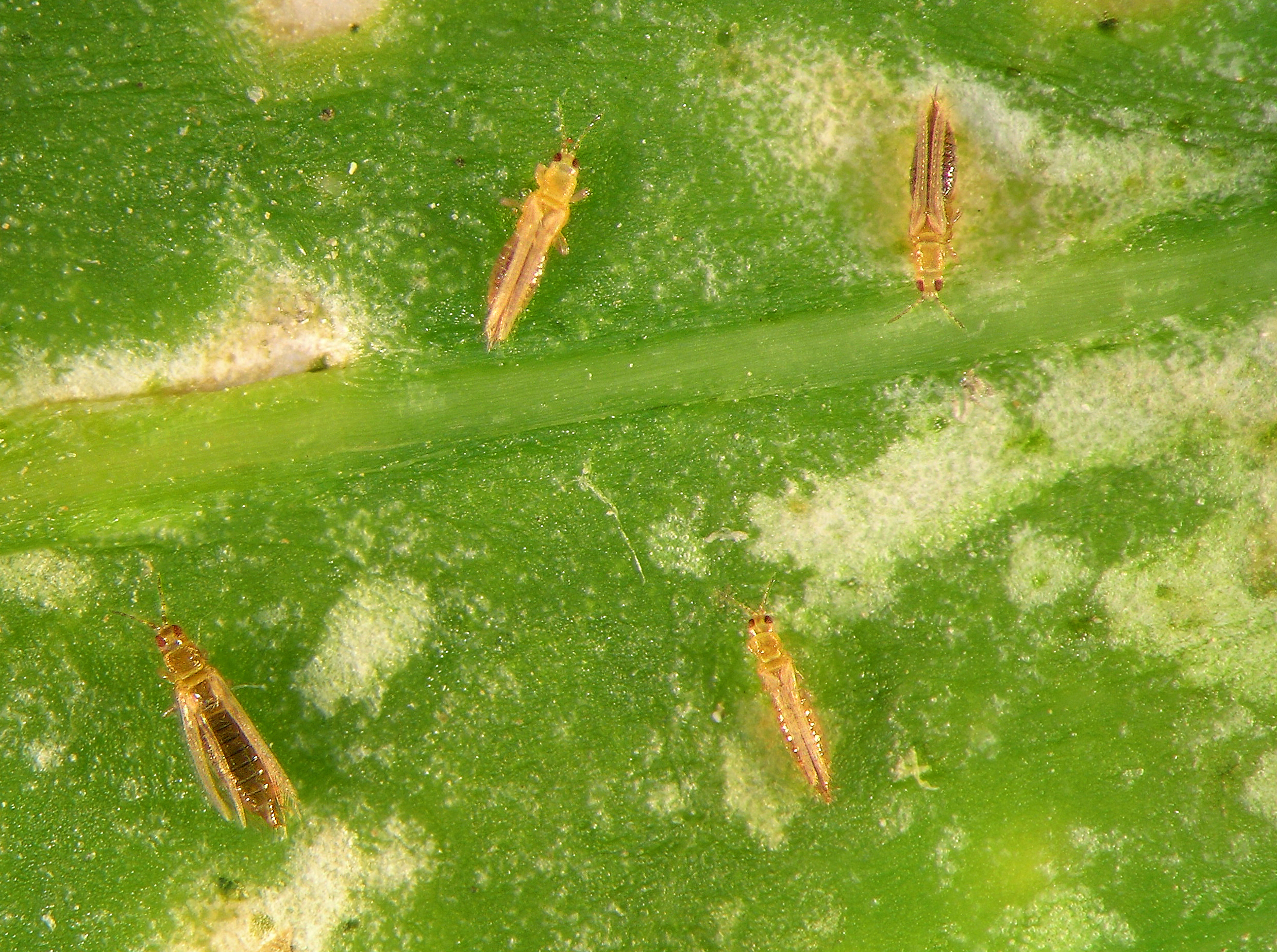
Thrips have the double threat of being both the most common orchid pests and the most difficult to control. These tiny insects are speedy and constantly in hiding, which allows an infestation to go unnoticed for much longer. Thrips will hide within the flowers to eat from the inside out, as well as lay eggs within the plant tissue. Since most thrips are female, there is the potential for hundreds of eggs to be laid in one orchid plant. These pests can also spread diseases from plant to plant, which is additional bad news for an orchid that is already battling a thrip invasion. Thrips reproduce more frequently when it’s warm outside, and the hatchlings will soon begin feeding on the plant’s sap as well. When thrips feed on the leaves for long enough, the leaves will become bleached and silvery. The flowers are no better off, as an infested flower will show darkened water spots and will not open up. It’s best to control thrips in spring rather than summer, as the higher temperatures will only lead to increased thrip populations in the garden.
Whiteflies
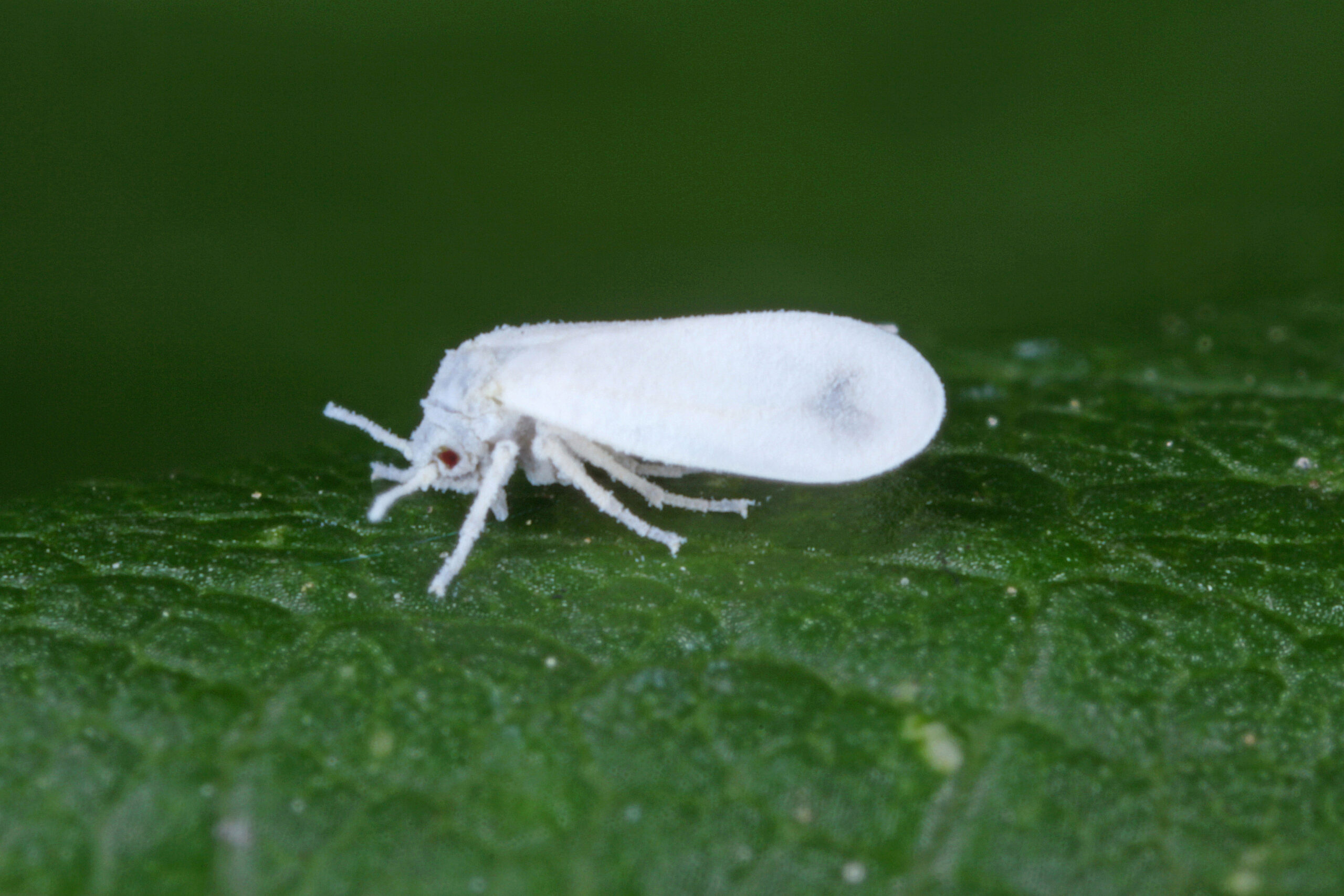
These tiny flies look more like moths upon closer examination, but they’re so small and jittery that it is nearly impossible to get a good look. Whiteflies will attach to the plant to consume as much sap as possible. They like both buds and full flowers, but will attack any new growth that they find. These pests are related to both scale and aphids, and function in similar ways. Whiteflies like to stay on the underside of leaves and are greatly active in warm temperatures. They are most dangerous in their larval stage, but the adults are menaces in their own right, especially since whiteflies live in huge groups. This is how their presence is made more obvious than others, as they will fly up in one big cloud when their plant is disturbed. When an orchid plant has a prolonged whitefly problem, it will fail to grow new flowers and never be at full health. If the whiteflies are not eliminated from the plant, they will eventually weaken the orchid until the plant dies.
Effective Pest Solutions are in Full Bloom
We are currently in the middle of spring, which means that plants, flowers, and trees are at their peak. There are plenty of food sources for wandering pests, and they are persistent enough to turn a garden into a wasteland. With the thorough and environmentally-friendly services from Pointe, your greenery will be safe from dozens of pests! We start every visit with a complete inspection of the property in order to determine the specific problem pests and their locations. Our knowledgable technicians are prepared to tackle any pest problem, and we will not consider a job to be finished until the issue is solved. Contact us for more information on our efficient services that will leave your flowers feeling safe enough to bloom this spring!
Citations
5 common orchid pests and how to prevent them. (2020, December 2). Orchid Resource Center. Retrieved March 10, 2023, from https://orchidresourcecenter.com/5-common-orchid-pests-and-how-to-prevent-them/
Barrett, B.A. (2010, June). Managing whiteflies on indoor and outdoor plants. University of Missouri Extension. Available at https://extension.missouri.edu/publications/g7275 (Accessed on March 10, 2023).
Cloyd, R. (1999, September 15). Orchid pests and their management. University of Illinois Extension. Available at https://hyg.ipm.illinois.edu/pastpest/199919a.html (Accessed on March 10, 2023).
Grant, B.L. (2023, February 17). Controlling pests on orchid flowers – Tips on managing orchid pests. Gardening Know How. Available at https://www.gardeningknowhow.com/ornamental/flowers/orchids/managing-orchid-pests.htm (Accessed on March 10, 2023).
Kamaile & Corinne. (2022, September 20). Orchid pests. Akatsuka Orchid. Available at https://akatsukaorchid.com/blog/orchid-pests-/ (Accessed on March 10, 2023).
Orchid bugs: 5 common orchid bugs and pests and how to handle them. Southside Plants. Retrieved March 10, 2023, from https://southsideplants.com/blogs/plant-care/5-common-orchid-pests-and-how-to-handle-them
Orchid pests and diseases – Orchid pests. (n.d.). St. Augustine Orchid Society. Retrieved March 10, 2023, from https://staugorchidsociety.org/culturepests-pests.htm
Orchid pests: Whiteflies and how to get rid of them. (2012, July 3). Just Add Ice – Orchids. Retrieved March 10, 2023, from https://www.justaddiceorchids.com/Just-Add-Ice-Orchid-Blog/bid/88097/Orchid-Pests-Whiteflies-and-How-to-Get-Rid-of-Them
Request a Free Quote Today
(We do not share your data with anybody, and only use it for its intended purpose)


